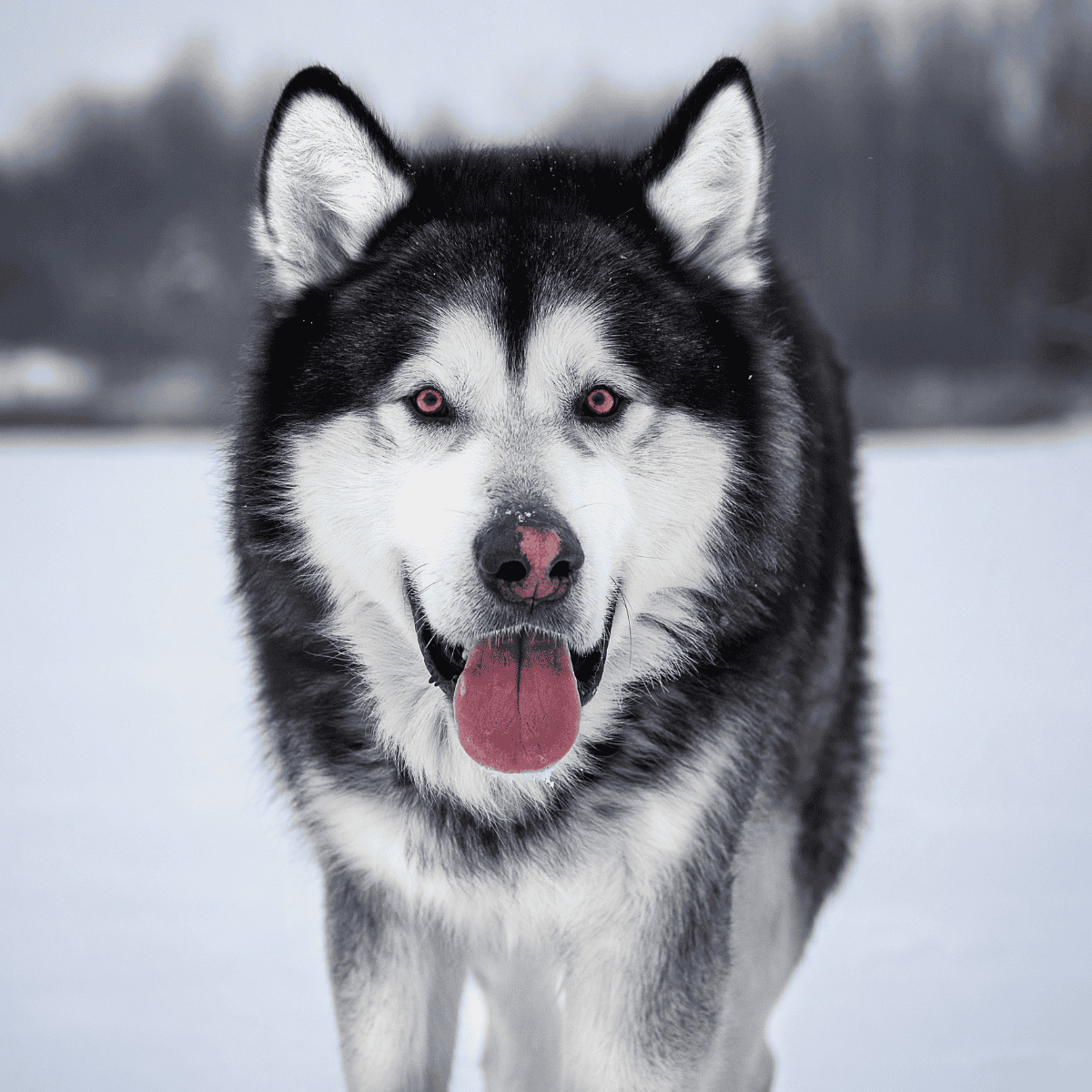
Alaskan Malamute
Shortcuts
The Alaskan Malamute is renowned for its strength, loyalty, and playful demeanor. These dogs are easily identified by their curled tails, erect ears, and dense, weatherproof coats. Originating as arctic sled dogs, they have substantial bones that testify to their hardy nature. They are affectionate and dignified, with deep chests and powerful shoulders, bringing a sparkle to their almond-shaped brown eyes.
Being natural pack animals, Alaskan Malamutes thrive in family environments where clear leadership is evident. Early, firm, and loving training is crucial, ensuring they respect their human companions. Well-trained Malamutes are gentle, friendly, and excellent with children. Their combination of strength and affection allows them to work hard and enjoy relaxing moments with their families, making them ideal companions for individuals and families.
Breed Overview

Height
23 – 25 inches
Weight
75 – 85 pounds
Lifespan
10 – 14 years
Colors
Grey, black, white, sable, red
Suitable for
Families with active lifestyles in search of a canine companion for their adventures.
Temperament
Affectionate, devoted, fun-loving, smart


Height
23 – 25 inches
Weight
75 – 85 pounds
Lifespan
10 – 14 years
Colors
Grey, black, white, sable, red
Suitable for
Families with active lifestyles in search of a canine companion for their adventures.
Temperament
Affectionate, devoted, fun-loving, smart

The Alaskan Malamute is a large and powerful breed originating from the Arctic. It is known for its friendly nature and high energy levels. It requires ample space and regular exercise. It is also a loyal and affectionate companion, making it well-suited for families and outdoor activities.
Characteristics
Energy

Health

Sociability

Trainability

Lifespan


Enjoying this read?
We publish this content for free to generate interest in our Premium members' area. By subscribing, you can ask the writer any questions related to pet care and this article, get access to 100+ Premium Pet Care Guides and go Ad-Free with DogFix Premium for $2.99.
Health Conditions
Alaskan Malamutes are prone to specific health conditions like hip and elbow dysplasia, thrombopathia, chondrodysplasia, hypothyroidism, inherited polyneuropathy, Von Willebrand’s disease, and day blindness.
Minor Conditions
- Dental disease
- Cataracts
- Hypothyroidism
Serious Conditions
- Hip dysplasia
- Willebrand’s Disease
- Bacterial and Viral Infections
- Chondrodysplasia
- Hemeralopia



Alaskan Malamute Puppies
Alaskan Malamute puppies are renowned for their smarts and trainability, thriving in active family settings with plenty of space. Early socialization is crucial for these pups, encouraging positive interactions with humans and other dogs. This helps prevent aggression and ensures they adapt well to various environments, particularly if they stay with their family for the first six weeks.

While generally good-natured with humans, Malamutes may not always get along with other dogs, making ongoing socialization vital. Additionally, regular vet check-ups are essential to monitor their health, and owners must be prepared to address any breed-specific health issues. Awareness and management of these health concerns are crucial for the well-being of Malamute puppies, ensuring they lead a happy and healthy life.
Temperament & Intelligence Of The Alaskan Malamute
Alaskan Malamutes are known for their friendly, playful nature and enthusiastically welcoming strangers, which may not make them the best watchdogs. They’re incredibly loyal to their families, enjoy involvement in activities, and are not prone to unnecessary barking. Their characteristic “woo woo” howl is well-known, and factors like genetics, training, and early socialization significantly shape their temperament.
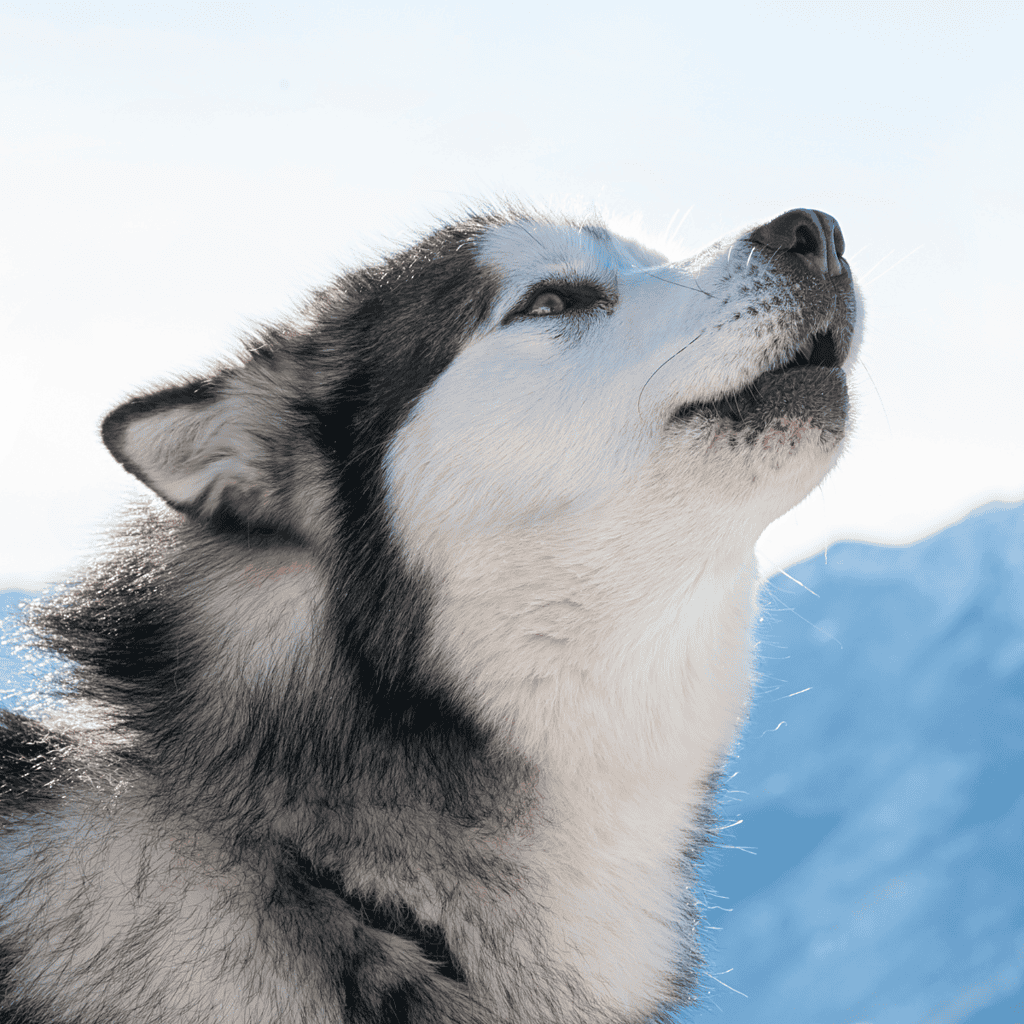
Alaskan Malamutes are bright and independent, thriving on positive reinforcement training methods. This breed requires consistent, patient training to utilize their intelligence effectively and maintain good behavior. With the proper socialization and training from an early age, Malamutes can become exceptional family pets. Their independence means they’re not the easiest to train, but success in training ensures a devoted companion.
Are These Dogs Good For Families?
Alaskan Malamutes make excellent family pets, cherished for their patience and gentleness around children. They thrive on constant attention from their human family, engenders a strong sense of belonging. However, due to their sizable nature, children must learn how to interact with these dogs, always under supervision to avoid any accidental roughness, like pulling on the dog’s ears, tail, or fur.

Introducing Alaskan Malamutes to other pets early on minimizes conflicts and enhances harmony within your household. Additionally, grooming plays a crucial role in the well-being of an Alaskan Malamute. Their dense coats demand frequent brushing and baths. Involving children in these grooming activities helps teach them responsibility and highlights the importance of caring for another creature’s needs.
Does This Breed Get Along With Other Pets?
Alaskan Malamutes can get along well with other pets when socialized early. They are friendly and gentle, making them suitable for households with multiple pets. It’s essential to take a gradual approach when introducing a Malamute to other animals.
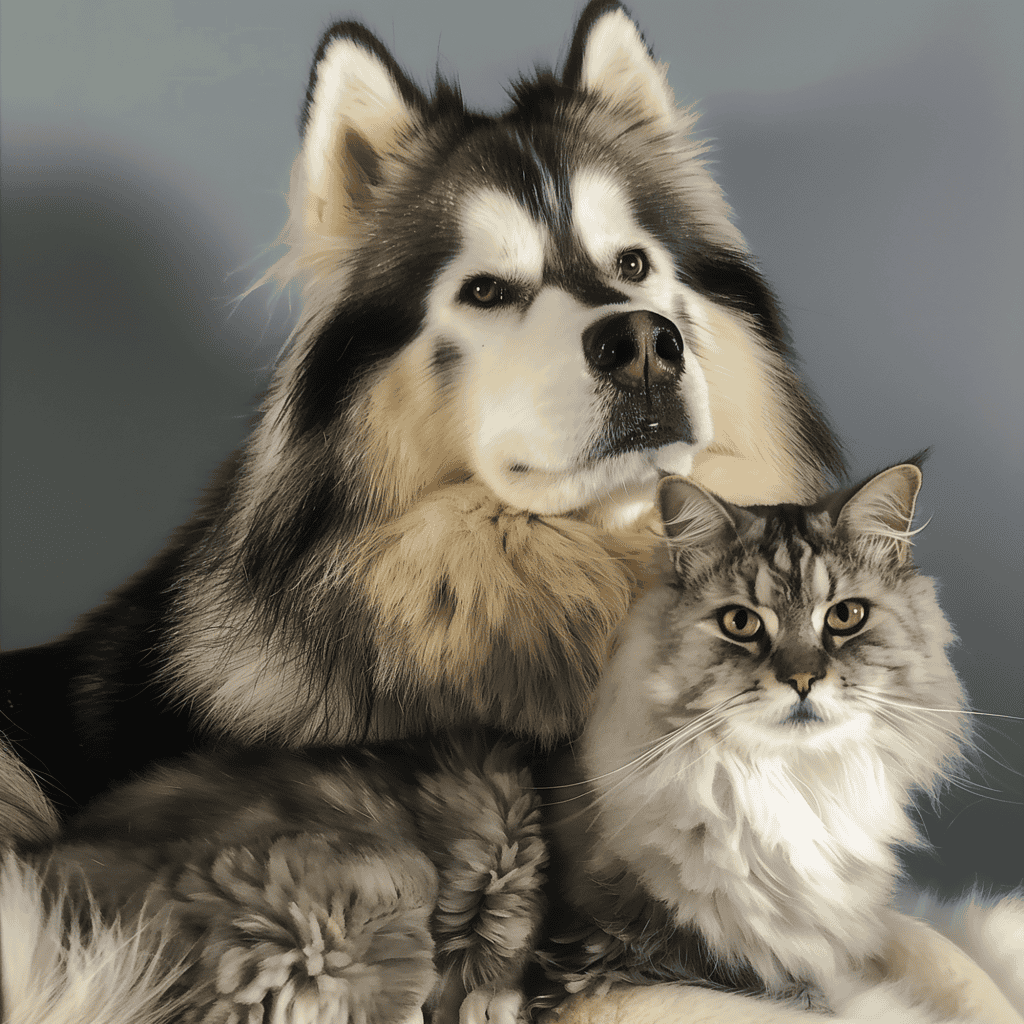
Tips for interaction include supervising initial meetings, rewarding positive behavior, and avoiding forced interactions. Malamutes’ gentle nature and playfulness make them great companions for other pets, but their large size and strong prey drive may present challenges around smaller animals.
Food & Diet Requirements
Alaskan Malamutes require a diet considering their age, weight, and health conditions. A balanced diet of high-quality kibble or raw food is ideal for most Malamutes. They typically need around 2 cups of food daily, though the exact amount can vary based on activity levels. Regular consultations with a veterinarian can help determine each dog’s precise nutritional needs, ensuring they remain healthy and active.

Always measure portions to avoid overfeeding, which can lead to obesity-related health issues. Provide fresh water at all times. Dietary adjustments might be necessary as your dog ages or if their activity level changes significantly.
Exercise
Alaskan Malamutes are known for their extremely high energy levels. To stay happy and healthy, they require substantial physical and mental stimulation. Daily exercise should consist of at least 1.5 to 2 hours of vigorous activities such as running, hiking, or pulling sleds.
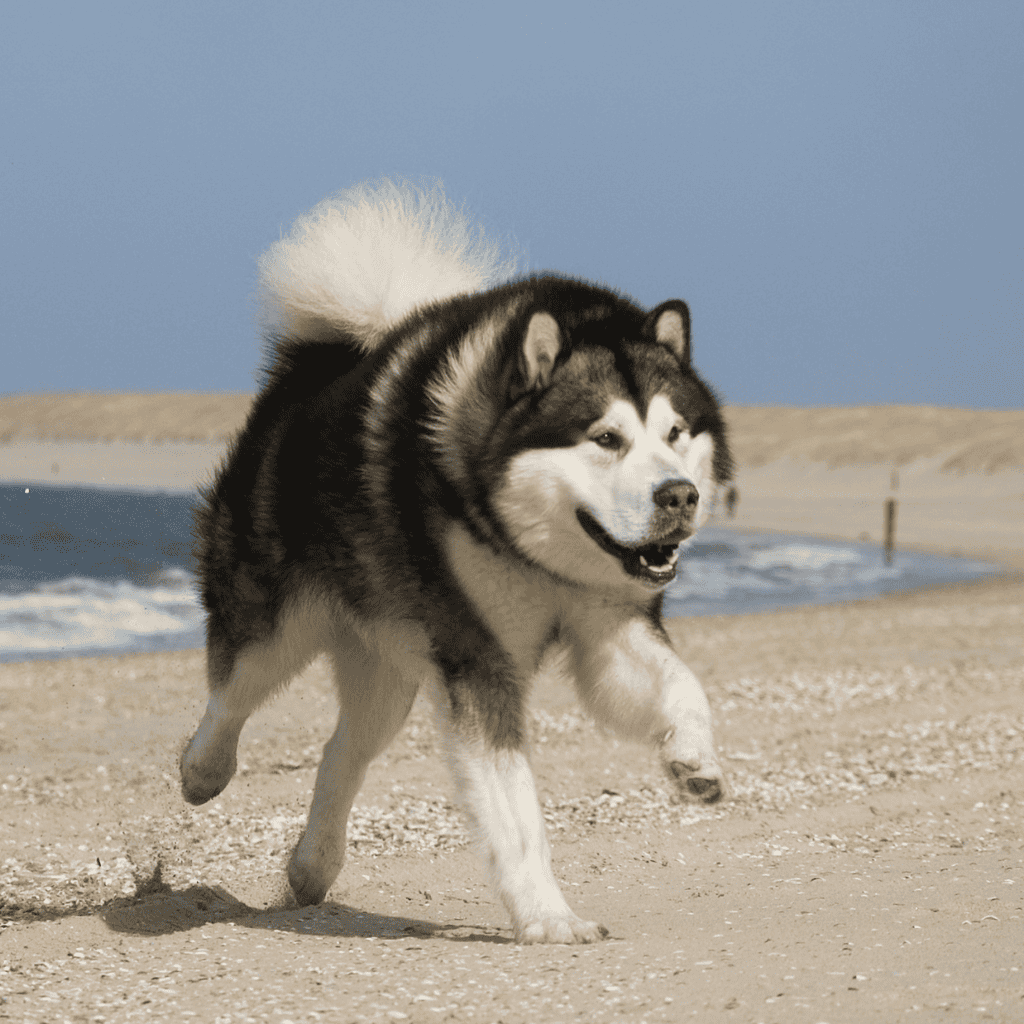
Keeping them physically active helps them stay in good shape and prevents destructive behavior at home. Without enough exercise, they may become restless and cause damage, especially in smaller living spaces. It’s beneficial to break their exercise into multiple sessions throughout the day. This breed thrives on activities that challenge both their body and mind.
Training
Alaskan Malamutes are intelligent and strong-willed, so training is essential. Start by teaching them basic obedience commands like sit, stay, and come. Early socialization is crucial to build their confidence, so expose them to various environments, people, and other animals. Use positive reinforcement techniques such as treats, praise, and play, and avoid harsh methods, as their independent nature can make them resistant to punishment.
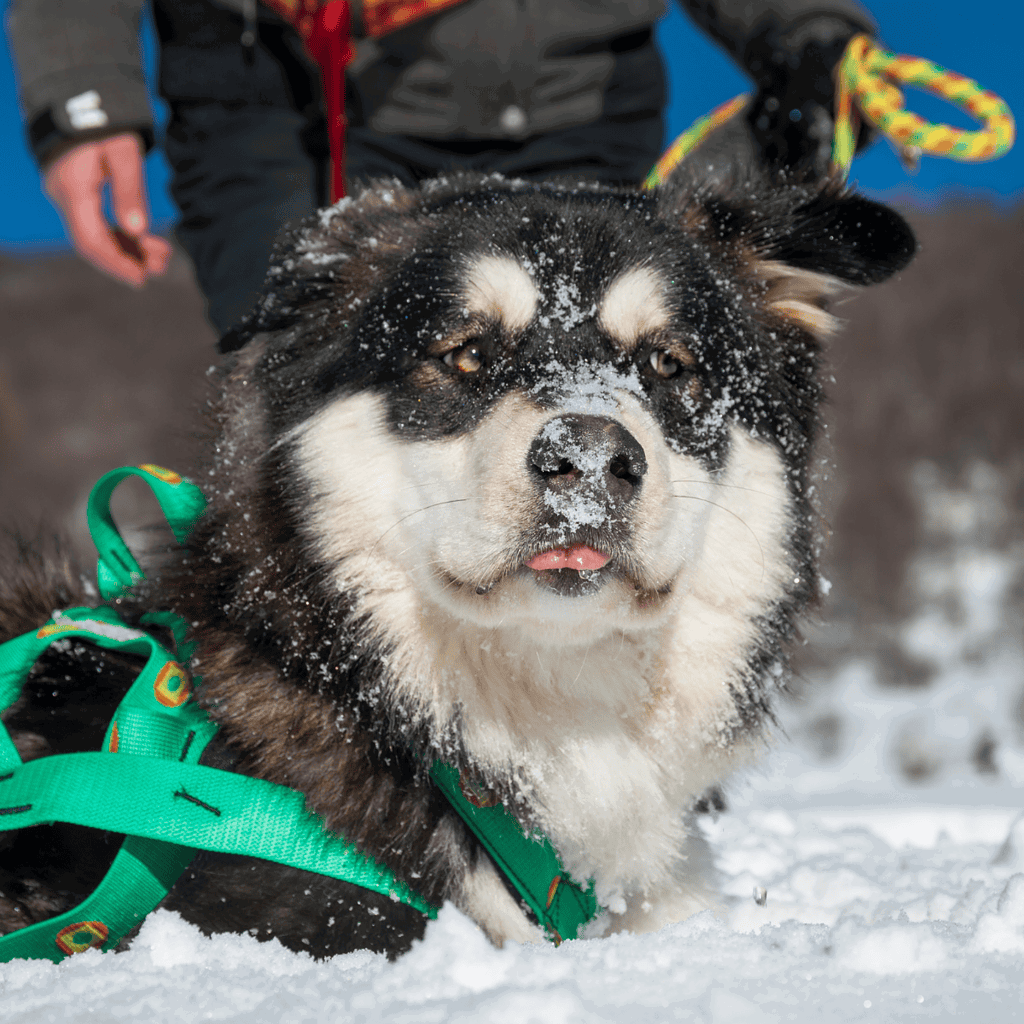
Consistency is key, so it’s better to have short, regular training sessions rather than lengthy, infrequent ones. Given their strength, leash training is important to prevent pulling and ensure safety during walks. Finally, mental stimulation is vital, so incorporate puzzle toys and training exercises to keep them engaged and to avoid boredom.
Grooming
Alaskan Malamutes have a unique double-layered coat that’s crucial for weather protection. The outer layer is thick and coarse, complementing the wooly, oily inner layer. Managing their shedding, which peaks twice yearly, requires brushing 1 to 3 times per week, with increased frequency during shedding seasons to tackle large fur clumps.

In addition to coat care, Alaskan Malamutes need their teeth brushed monthly and regular nail trims to avoid discomfort. It’s also important to regularly check their ears for signs of infection and periodically inspect their bodies for sores, rashes, or infections. These steps ensure they remain happy and healthy.
Male Vs. Female

Male Alaskan Malamutes usually have a larger build compared to females. They have a more robust presence in terms of height and weight. Males often show slightly greater stamina during physical activities, making them well-suited for long, vigorous play sessions or tasks. On the other hand, females tend to display more independence, which can be seen in their decision-making and daily behaviors.
Fact #1: Malamutes are not ideal for first-time dog owners.

Malamutes are large, powerful, and independent dogs that require experienced owners. They need consistent discipline, plenty of exercise, and regular grooming. Their strength requires careful supervision around small children and other pets. Due to their demanding nature, they are best suited for experienced owners.
Fact #2: Malamutes have a rich history beyond the Arctic.
Malamutes are versatile dogs beyond their traditional roles in Arctic regions. Their strength and endurance make them valuable in various challenging conditions. During World War II, Malamutes served as search-and-rescue dogs. Their ability to navigate rugged terrains and harsh climates made them indispensable in rescue missions.

These dogs also participated in Byrd’s Antarctic expeditions. Their resilience allowed them to endure extreme weather and contributed significantly to the missions’ success. Their historical roles highlight their adaptability and usefulness in environments far beyond their Arctic origins.
Fact #3: Alaskan Malamutes have ancient origins that trace back thousands of years.
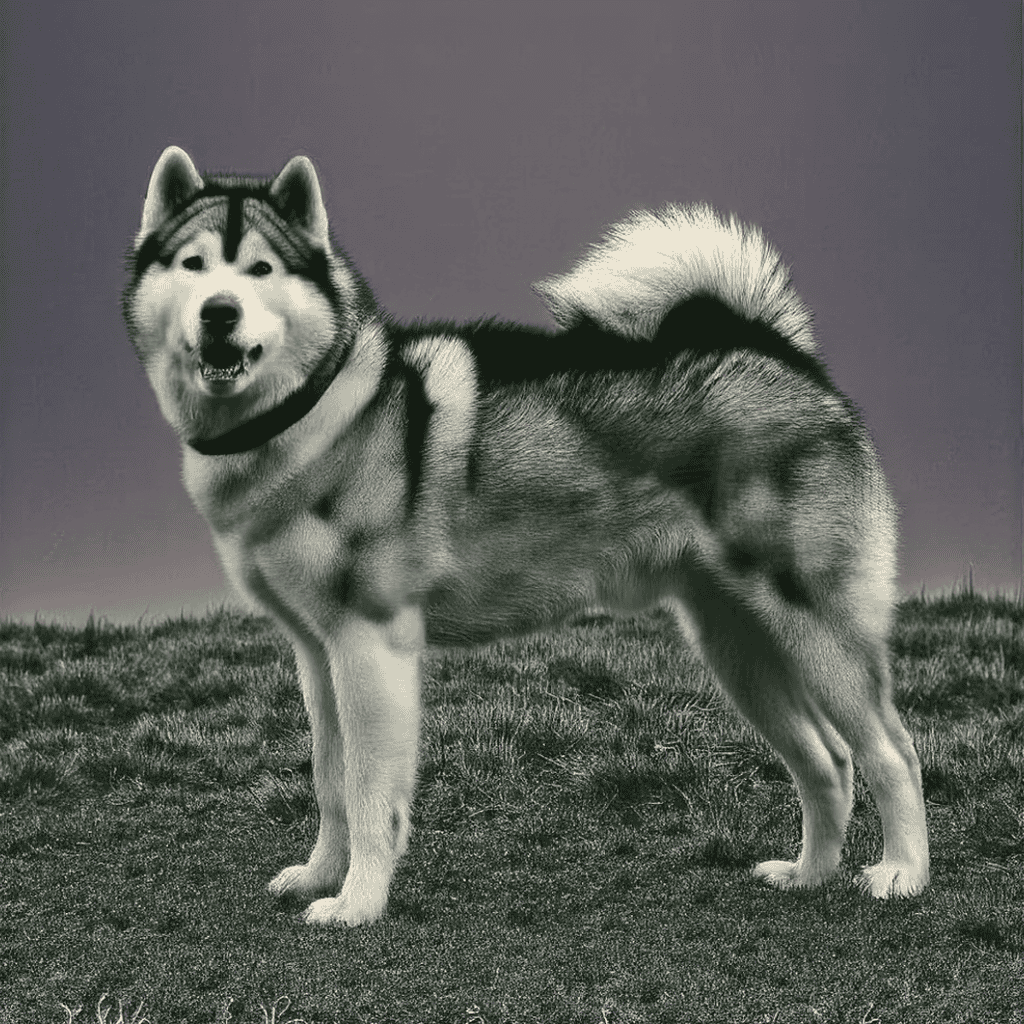
The Alaskan Malamute breed originated from the Mahlemut Inuit tribe in Alaska. Bred for hauling heavy sleds and hunting seals, these dogs are known for their strength, endurance, and loyalty. Their capabilities were crucial for the survival and thriving of the Inuit people in the harsh Arctic environment.
Frequently Asked Questions
What is the average weight range for an Alaskan Malamute?
The average weight of an Alaskan Malamute male ranges from 85 to 100 pounds, while females typically weigh between 75 and 85 pounds.
What personality traits are typically seen in Alaskan Malamutes?
Alaskan Malamutes are known for their friendly, loyal, brilliant, and independent natures. They often display a strong pack mentality.
How long do Alaskan Malamutes generally live?
Alaskan Malamutes generally live 10 to 14 years. Proper care, regular vet visits, and a balanced diet can improve their longevity.
What are the standard size dimensions of an Alaskan Malamute?
Male Alaskan Malamutes usually stand about 25 inches tall at the shoulder. Females are typically around 23 inches tall.
What variety of colors do Alaskan Malamutes come in?
Alaskan Malamutes come in various colors, including light gray, black, sable, and red. They can also have white markings, often appearing on the face, legs, and underbelly.
How often do Alaska Malamutes require grooming?
Due to their thick double coat, Alaskan malamutes require frequent grooming. Brush them a few times a week and more during shedding seasons.

Didn’t find what you need? Use the search!
Search our database of over hundreds of posts with up-to-date information from our experts and veterinarians.

